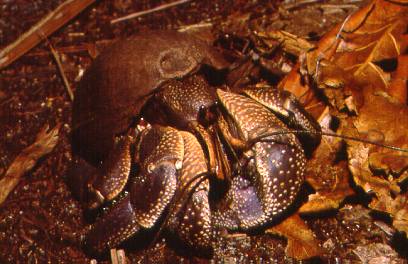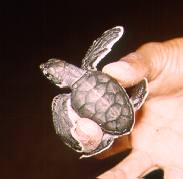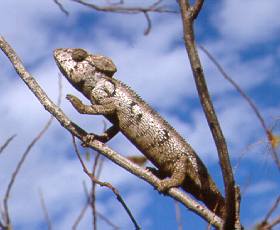Would you like to make this site your homepage? It's fast and easy...
Yes, Please make this my home page!
For the implementation of such measures it is vital to understand the needs and
requirements of the local population to avoid fruitless conflict. Such data
is completely absent so far, and therefore, this is what we wished to provide.
Our basic findings were as follows: As is common throughout Madagascar, an increasing
number of the people in both sites were migrants from other parts of Madagascar
come to benefit from the rich marine resources. Particularly for these people,
the main way of making a living is fishing.
In
the Radama islands where people do make a living out of growing crops such as
bananas and rice, it was explained to us that fishing would be much preferred,
because it is much less arduous, but there was no market close enough for sale.
Probably the most lucrative and popular forms of fishing are the capture of
sea-cucumbers and shark fins for the Asian Market. It became apparent that both
these activities have only become common within the last 7-8 years, yet the
observable consequences of their development are already alarming. Although
there are legal size limitations for harvesting of sea cucumbers, these are
disrespected throughout the area. The size of sea cucumbers in shallow waters
has plummeted even in this short period of some six or seven years. Increasingly,
people are resorting to methods as sophisticated as the use of oxygen bottles
to attain deeper waters where larger ones can still be found.
Throughout
our stay in the field, we worked closely with local communities whose life-styles
and activities most impact upon the ecology of the North Western coasts of Madagascar.
This work was carried out primarily by the Community Survey section of the team,
although all team members - whilst living and working alongside local communities
- added to the wealth of information collected. In both the Radama Islands and
the Nosy Hara Archipelago, we set out to investigate the basic demographics
of villages, and local levels of exploitation of marine resources. Both sites
are under consideration for development as Marine Reserves.
Site content © Nosy Hara-
Radama Island Survey Initiative 2001
Site design by mampam.com

In many villages all men from the ages of 14 upwards may be involved in this trade.
It has become a veritable social sub-group, with trademarks such as rasta orange
tinted hair, and a habit of spending all the money they make almost instantaneously
on beer, drugs and women. Women also are involved in sea cucumber fishing. However,
the 'women's method' is very different from the snorkeling method favoured by
men. Every month or so, during the neap tides, certain coral reefs can be exposed
at low tide. In the coral-reef-rich Nosy Hara area, this is particularly evident.
Boatloads of up to thirty women camp on the islands for up to a week, and when
the tide is low they go out and walk along the reefs collecting sea-cucumbers.
This is known locally as 'mihaka'. At times we observed up to 60 other people
camping on one beach, all involved in the preparation of sea-cucumbers collected
during mihaka. It is a very social event. Unfortunately, mihaka has two significant
negative consequences. Apart from occasional damage toral, the preperation of
sea-cucumbers involves the use of fires to boil the days catch.
Deforestation of the near pristine forests of the islands during the mihaka
period is an inevitable, and observable, side-effect of this practice. Shark
fishermen operate using broad mesh nets known as 'jarifa'. A man repairing
shark nets is a common site in villages up and down the coast and damaged
nets may be used for fencing. The use of nets is highly effective and shark
fishermen can catch as many as 100 sharks in a week's fishing trip. However,
shark meat is not prized, and usually the fins are removed, and the rest of
the shark abandoned. All sizes are taken, again in spite of existing legislation.
Moreover, the large nets also trap other marine animals - in particular numerous
turtles fall victim to such nets. While it is difficult to quantify the number
of turtles caught or killed in shark nets, it was uncommon for a shark fisherman
to return from a fishing trip to and report that at least one turtle had been
killed. This is one of the many problems where further work is urgently needed.
Most villages possess small shops selling plastic-ware, biscuits, beer, and
soft drinks. However, most also have no schools or any medical support that
is not within several hours walking distance. This may be influenced by the
fact that as many of the people are migrants who stay for only short periods
in each area, and for whom there is little impetus to invest in the village
they are currently occupying. Also, many villages on the coast off the Nosy
Hara archipelago are seasonal, and are populated only during those months
when the seas are calm. In the Nosy Hara archipelago, turtles seem mostly
to be taken opportunistically, as a convenient food source while camping on
the islands, rather than exploited economically for meat or shells. In the
Radama Islands the majority of the permanent population of the islands respect
local fady (taboo) that protects turtles from capture or consumption. However,
the sizeable migrant population that also frequent the area regularly catch
and eat turtles. The sale of scales for the creation of ornaments was quite
routine in the Radamas, although almost entirely absent in the Nosy Hara region.
Although occasionally we encountered hostility in the more suspicious and
commercial-minded of the fishermen, often people we talked were friendly and
sometimes gratifyingly interested in our work. Moreover, local people were
impressively knowledgeable regarding local wildlife. In particular, many people
were knew a lot about turtle biology and nesting activities. Unfortunately,
most were skeptical regarding the endangered status of marine turtles given
their high abundance in the area. Future work in both area is essential if
future management plans are to be implemented. In particular the introduction
of conservation education is to be supported. However, migrant fishermen remain
the biggest threat to the area's marine environment, and until these areas
fall under the protection of Marine Reserves it is unlikely that the undoubted
natural wealth of the North Western coasts of Madagascar can properly be protected.










